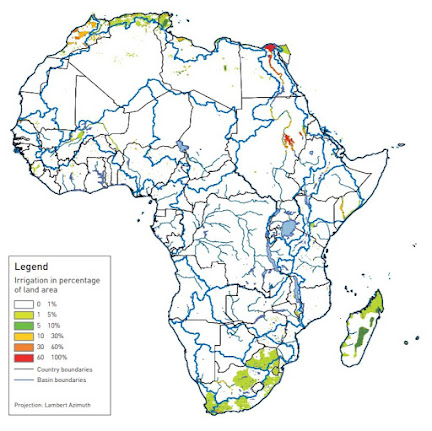Desalination for irrigation
In this blog I briefly discuss a story that caught my attention from Somaliland using desalination. I discuss the benefits of the project and whether it is a feasible response for African nations.
The main drawback for the desalination of seawater is its high-cost and so is often regarded too costly for use in growing crops. However, Seawater Greenhouse is a start-up disputing this claim. The video below demonstrates how they use pan and fan technology in Somaliland to create a cool humid microclimate inside greenhouses to grow a variety of crops including lettuces and tomatoes. The microclimate created reduces the water uptake of crops up to ten to one hundred-fold dependent on numerous variables. This project successfully utilises desalinated water for irrigation due to the reduced water uptake.
 |
| Current small areas of irrigated land in Africa (FAO, 2005) |


Comments
Post a Comment